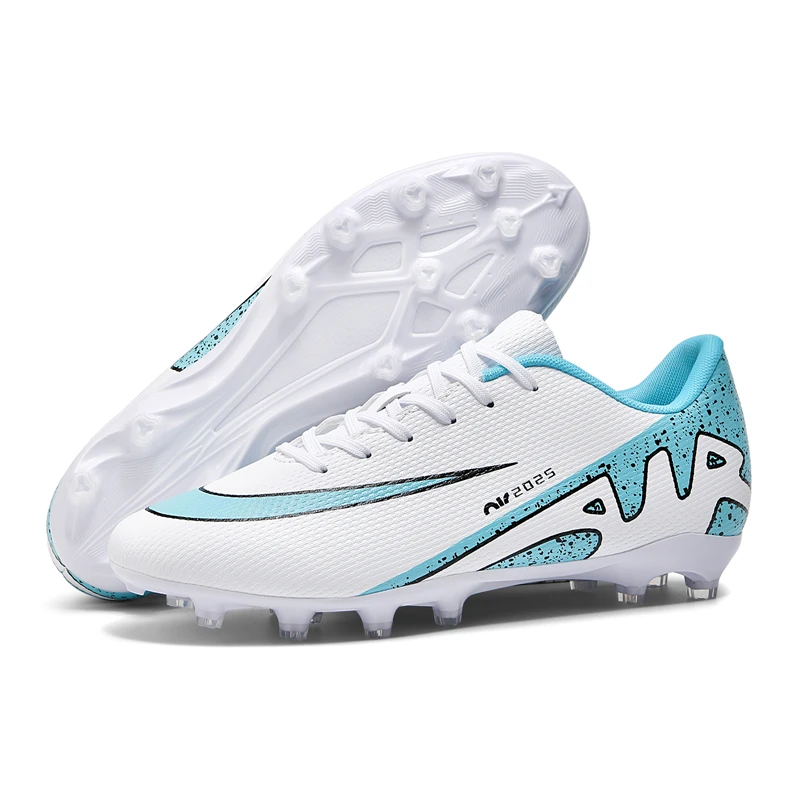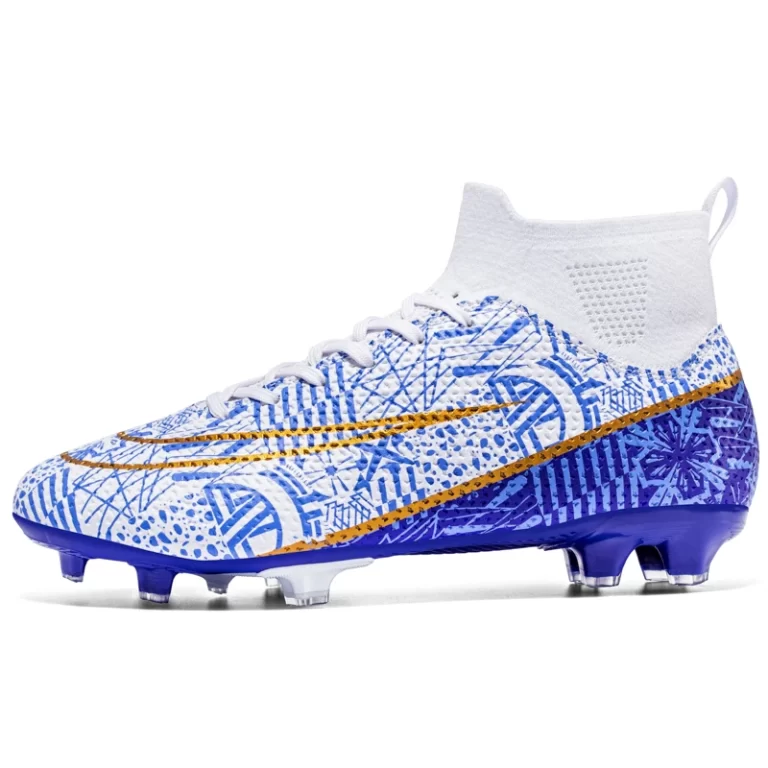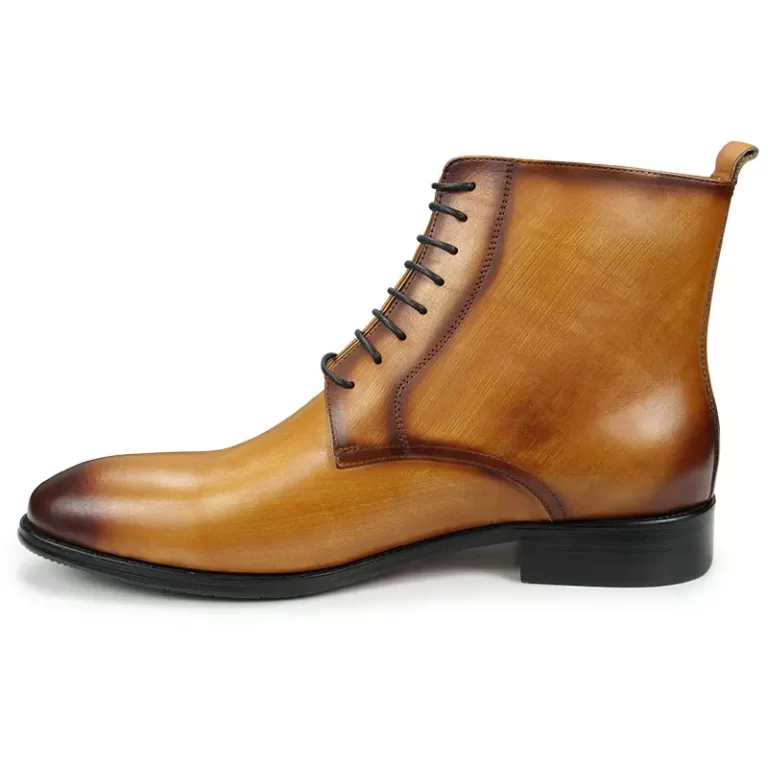Introduction
Football boots are crucial for any player aiming to excel on the pitch. These specialized shoes provide the grip, support, and comfort needed for peak performance. This guide explores the different types of football boots, their features, how to choose the right pair, and their impact on performance. Whether you’re a seasoned player or just starting, understanding these aspects will help you make an informed decision.
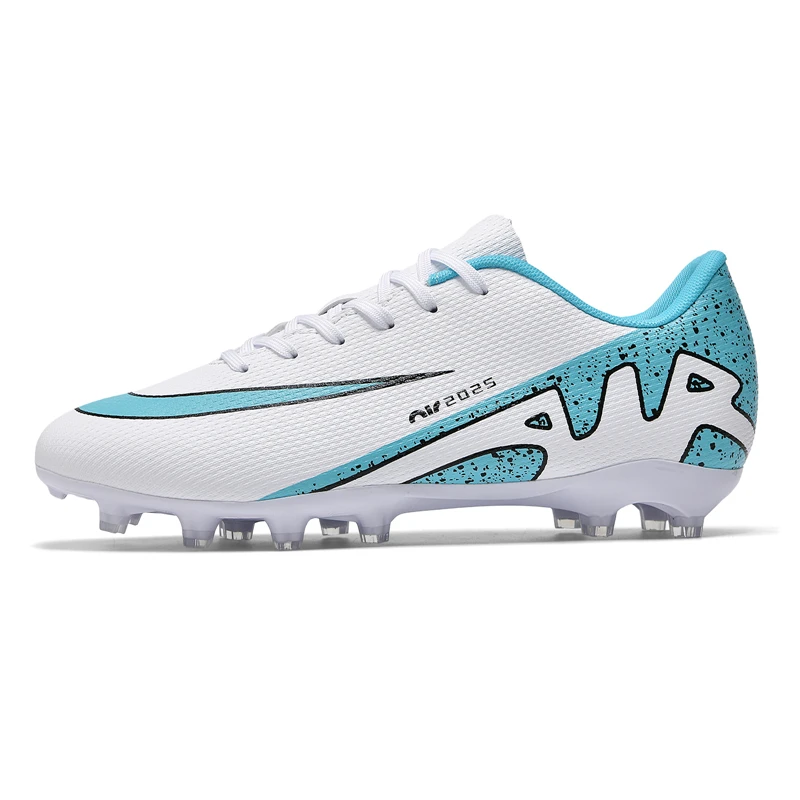
Understanding Football Boots: Types and Features
Types of Football Boots
Football boots come in various types, each designed for specific playing surfaces and conditions. Here’s a closer look at the main types:
Firm Ground (FG) Boots
Firm Ground boots are the most common type. They are designed for use on natural grass pitches that are firm and dry. The soleplate of FG boots features a mix of conical and bladed studs, providing excellent traction and stability. These boots are versatile and suitable for most conditions found on well-maintained grass fields.
Soft Ground (SG) Boots
Soft Ground boots are ideal for wet or muddy conditions. They have longer, more aggressive studs made of metal or plastic, which penetrate the ground for better grip. The design helps prevent slipping on slippery surfaces. SG boots are best used on pitches that are consistently soft or soggy.
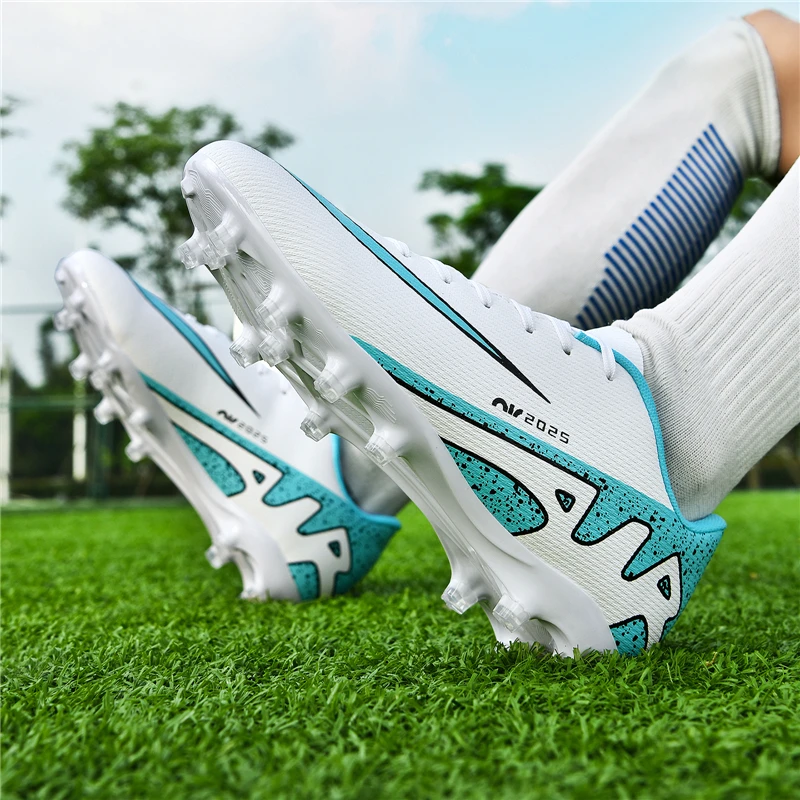
Artificial Ground (AG) Boots
Artificial Ground boots are specifically designed for synthetic surfaces, such as those found in modern artificial pitches. They feature shorter, more numerous studs to offer even traction and prevent damage to the synthetic surface. AG boots help reduce the risk of injuries common on these surfaces.
Turf (TF) Boots
Turf boots are suited for hard, artificial surfaces and indoor pitches. They have a rubber outsole with numerous small studs or patterns. This design provides excellent grip and control on hard surfaces and helps reduce the risk of injuries from slipping.
Indoor (IN) Boots
Indoor boots are designed for use on smooth indoor surfaces. They have a flat, rubber outsole that offers maximum grip on hard floors. The design focuses on providing comfort and control while preventing damage to indoor surfaces.
Key Features of Football Boots
When choosing football boots, several features play a critical role in performance and comfort. Understanding these features can help you select the right pair.
Fit and Comfort
The fit of football boots is crucial for performance and injury prevention. Boots should fit snugly without being too tight. They should provide support and cushioning, especially in the areas where players experience the most pressure, such as the heels and the balls of the feet. Look for boots with a good balance of cushioning and support to prevent blisters and discomfort.
Material
Football boots are made from various materials, including leather and synthetic fabrics. Leather boots offer excellent comfort and adaptability, molding to the shape of the foot over time. Synthetic materials are lightweight and often more durable, with water-resistant properties that can be beneficial in wet conditions.
Stud Configuration
The configuration of the studs on the soleplate affects traction and stability. Different types of boots have different stud patterns to suit various playing surfaces. For example, FG boots have a mix of conical and bladed studs, while SG boots often feature longer, metal studs for better grip in soft conditions.
Support and Stability
Support and stability are essential for preventing injuries and enhancing performance. Look for boots that provide adequate ankle support and have features like padded collars and reinforced toe caps. Stability is enhanced by a well-designed soleplate that helps maintain balance during quick movements and turns.
Choosing the Right Football Boots
Consider Your Playing Surface
One of the most important factors in choosing football boots is the playing surface. Different types of boots are designed for specific surfaces, and wearing the wrong type can negatively impact your performance and increase the risk of injury.
For Grass Pitches
If you play primarily on natural grass pitches, Firm Ground (FG) boots are generally the best choice. They provide good traction and stability on firm surfaces. For very soft or muddy grass pitches, you might consider Soft Ground (SG) boots with longer, more aggressive studs.
For Synthetic Pitches
When playing on synthetic pitches, Artificial Ground (AG) boots are ideal. They have shorter, multiple studs that offer even traction and prevent excessive wear on synthetic surfaces. Turf (TF) boots are also suitable for very hard synthetic pitches or artificial turf.
For Indoor Play
If you play indoors or on very hard surfaces, Indoor (IN) boots are designed to provide grip and control on smooth floors. They have flat, rubber outsoles that prevent slipping and damage to indoor surfaces.
Determine Your Playing Style and Position
Your playing style and position can influence the type of football boots that will be most effective for you. Different positions and styles require specific features to enhance performance.
For Attackers
If you are an attacker who needs speed and agility, look for lightweight boots with a streamlined design. Boots with a low profile and minimalistic design can help you move quickly and change direction easily.
For Defenders
Defenders often need boots with good stability and protection. Look for boots with reinforced toe caps and solid construction. They should provide excellent traction to help you maintain your footing during tackles and defensive maneuvers.
For Midfielders
Midfielders require boots that offer a balance of comfort, control, and traction. A boot with a good combination of cushioning and grip can help you maintain control of the ball and distribute it effectively across the field.
For Goalkeepers
Goalkeepers need boots that offer stability and support, particularly around the ankle area. Boots with good grip and durability can help goalkeepers perform well on various surfaces while making quick movements and jumps.
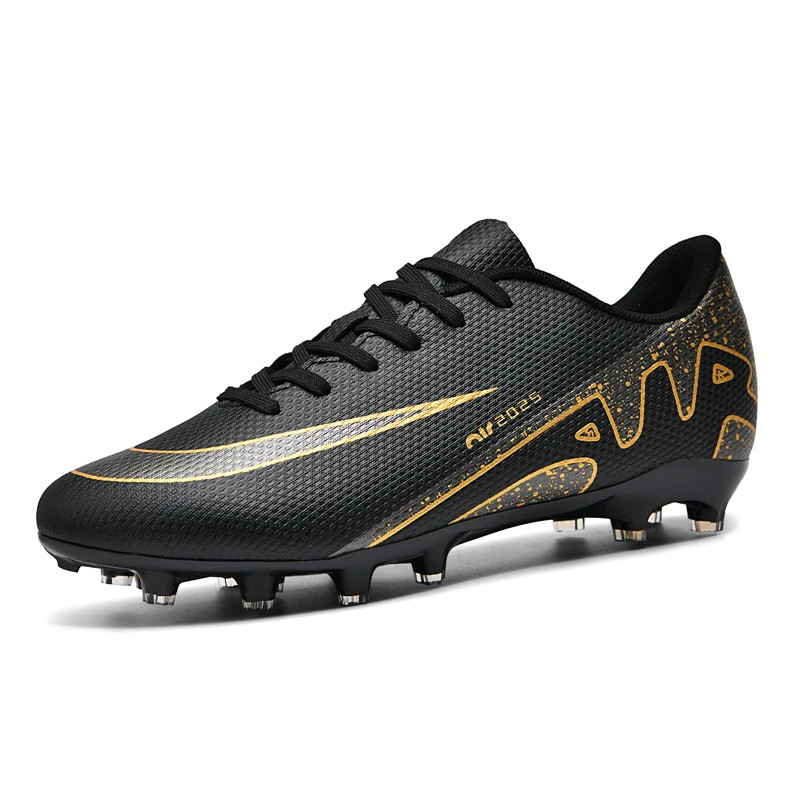
Fit and Sizing
Getting the right fit is crucial when choosing football boots. Boots that are too tight or too loose can cause discomfort and affect your performance.
Trying Them On
When trying on football boots, wear the socks you plan to use during games. Walk around and perform some light exercises to ensure the boots fit well. Check for any pressure points or areas where the boots might be too tight.
Customization
Some brands offer custom football boots, allowing you to choose specific features, colors, and designs. Custom boots can be tailored to your foot shape and playing style, providing an enhanced level of comfort and performance.
The Impact of Football Boots on Performance
Enhancing Traction and Grip
One of the primary functions of football boots is to provide traction and grip on the playing surface. Proper traction helps players maintain balance, make quick turns, and accelerate effectively. The stud configuration and material of the soleplate play a significant role in how well boots grip the surface.
Reducing Slips and Falls
Good traction helps reduce the risk of slipping and falling. On soft or muddy surfaces, boots with longer or more aggressive studs can help prevent slipping. On hard or artificial surfaces, boots with numerous small studs or patterns offer stability and grip.
Improving Comfort and Support
Comfort and support are essential for maintaining performance and preventing injuries. Football boots with adequate cushioning and support help absorb shock and reduce strain on your feet and legs. Properly cushioned boots can also prevent blisters and discomfort during long matches or training sessions.
Preventing Injuries
Boots with good support can help prevent common football injuries, such as ankle sprains and muscle strains. Supportive boots help stabilize the foot and ankle, reducing the risk of injury during quick movements and tackles.
Boosting Confidence and Performance
Wearing the right football boots can boost your confidence on the field. When you are comfortable and confident in your gear, you can focus more on your game and perform at your best. Boots that fit well and offer the right features can enhance your overall playing experience.
Caring for Your Football Boots
Regular Cleaning and Maintenance
Proper care and maintenance can extend the lifespan of your football boots. Regular cleaning helps remove dirt and debris that can damage the material. Use a soft brush or cloth to clean the surface of the boots. For stubborn stains, use a mild detergent and water.
Drying and Storage
After cleaning, allow your boots to dry naturally. Avoid placing them near direct heat sources, as excessive heat can damage the material. Store your boots in a cool, dry place to prevent mold and mildew.
Replacing Worn-Out Boots
Football boots can wear out over time, particularly the studs and soles. Check for signs of wear, such as worn-out studs or a damaged soleplate. Replacing boots when they are no longer providing adequate support and grip can help prevent injuries and maintain performance.
Conclusion
Football boots for men are a crucial piece of equipment for any player. Understanding the different types of boots, their features, and how to choose the right pair can greatly enhance your performance on the field. Whether you play on grass, synthetic surfaces, or indoors, there’s a football boot designed to meet your needs. Proper care and maintenance will ensure that your boots remain in good condition and continue to support you throughout your football journey.
